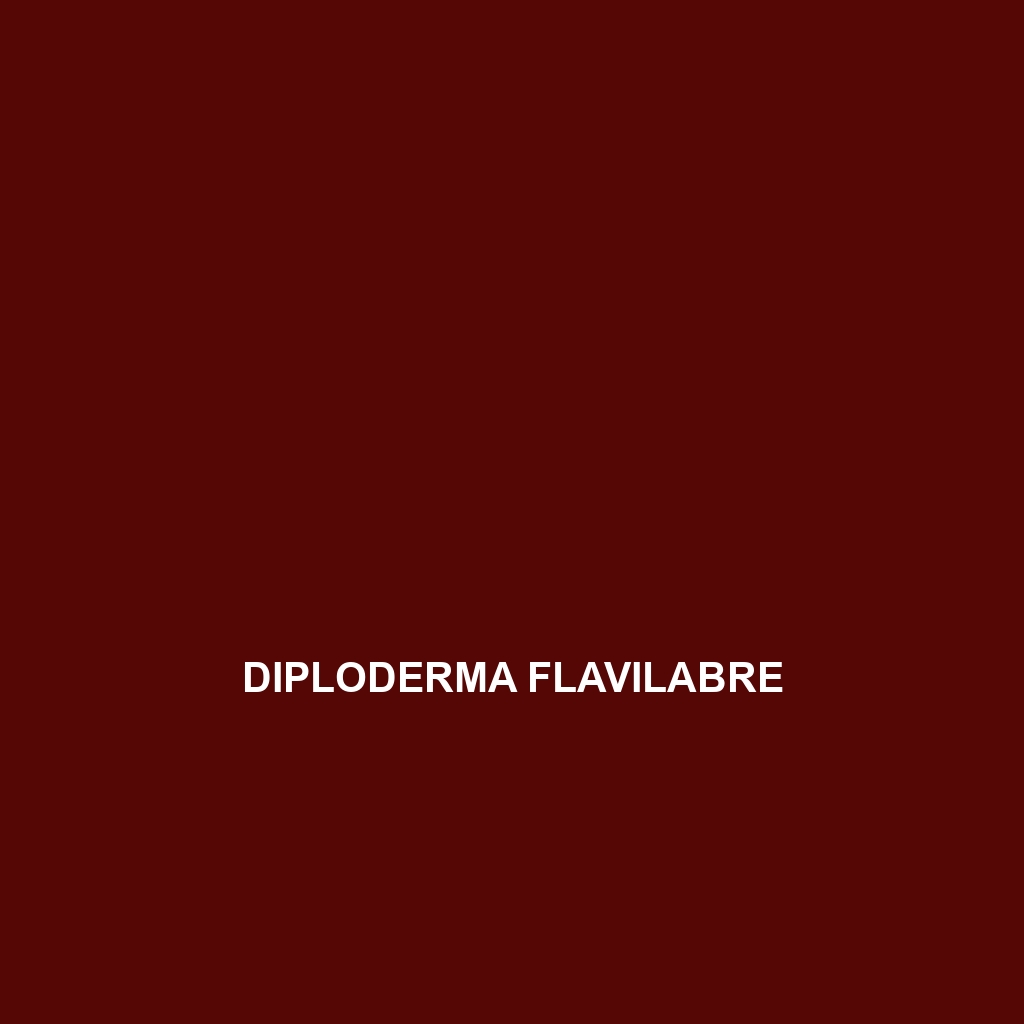Species Description: Diploderma flavilabre
Common Name: Diploderma flavilabre
Scientific Name: Diploderma flavilabre
Habitat
Diploderma flavilabre, commonly known as the yellow-lipped lizard, is primarily found in the mountainous regions of southeastern Asia, particularly in parts of China and Vietnam. This species thrives in temperate forests and hilly areas, where it prefers moist, wooded environments that offer ample cover and basking sites.
Physical Characteristics
Diploderma flavilabre typically grows to a length of 20 to 25 cm (7.9 to 9.8 inches). It is characterized by its striking coloration, featuring a distinctive yellow or orange lip that sets it apart from other lizard species. The skin is generally rough and may vary in color from brown to grey, with various patterns that provide excellent camouflage against the forest floor. The lizard has a stocky body, short legs, and a long tail, which aids in balance and agility amidst its arboreal habitat.
Behavior
This species exhibits diurnal behavior, meaning it is active during the day. Diploderma flavilabre is known for its climbing abilities and often seeks refuge in trees or underbrush. Socially, it tends to be solitary but may be observed basking in groups during warmer days. They are known to be territorial, exhibiting behaviors to ward off intruders, which includes head bobbing and displaying their vibrant coloration.
Diet
Diploderma flavilabre is predominantly insectivorous, feeding on a variety of small invertebrates, including crickets, beetles, and other insects. It has also been known to consume fruits and soft plant materials. This diverse diet allows it to adapt to various food availability in its habitat, making it an essential predator within its ecosystem.
Reproduction
The breeding season for Diploderma flavilabre typically occurs in late spring to early summer. Females lay clutches of 2 to 6 eggs in concealed locations, such as under leaf litter or within crevices in trees. After an incubation period of around 60 to 90 days, hatchlings emerge, often sporting similar coloration as adult lizards but at a smaller scale. The juveniles are independent immediately after hatching and must fend for themselves.
Conservation Status
Diploderma flavilabre is currently classified as “Vulnerable” on the IUCN Red List. Its habitat is increasingly threatened by deforestation and habitat loss due to agricultural expansion and urban development. Conservation efforts are crucial to protect its natural environment and ensure the species remains viable for future generations.
Interesting Facts
One fascinating trait of Diploderma flavilabre is its ability to change its color slightly depending on its mood and environmental conditions. Additionally, its yellow lip serves not only as a warning coloration against predators but also plays a role in attracting mates during the breeding season.
Role in Ecosystem
As a predator, Diploderma flavilabre plays a vital role in controlling insect populations within its habitat. By preying on a variety of insects, it helps maintain a balanced ecosystem. Furthermore, as a prey species for larger predators, it contributes to the food web dynamics of its environment.
